Getting the best sound from your headphone setup can be a balancing act, but does it have to be?
A typical headphone source (amplifier, DAP, etc.) supports an unbalanced headphone connection. Think of that round ¼” headphone jack on your stereo or the 3.5mm socket on your (non-i) phone. However, it is becoming much more common for manufacturers to also include separate balanced headphone connections on their devices.
While once the purview of ultra-high-end or professional equipment, balanced connections have recently found their way to lower-priced consumer products. The idea, however, isn’t a new one. In fact, the HeadRoom Blockhead balanced headphone amplifier was introduced way back in 1999.
To confuse matters, some amplifiers will have outputs that are labeled balanced and single-ended, rather than balanced and unbalanced. So what’s single-ended and is it different from unbalanced? To answer this question, we have to take a short detour through amplification theory.
Single-Ended or Differential? Unbalanced or Balanced?
One basic amplifier circuit structure is referred to as single-ended. In a single-ended amplifier, the signal always remains whole and is handled in its entirety by the amplifying devices (tubes or transistors). In this type of circuit structure, we usually have two important voltage references: the signal itself and ground.
The other basic amplifying structure is referred to as differential (or push-pull). A differential amplifier has pairs of devices, with each half of a pair amplifying opposite phases of the signal. Differential amplification can achieve higher power and greater efficiency than single-ended amplification (given the same parts).
A differential amplifier only cares about the difference between phases, so non-linearities, power supply ripple, and interference tend to cancel once the phases are recombined. The phases (positive and negative or hot and cold) are the two important voltage references for differential amplification.
While single-ended amplifiers tend to have unbalanced connections and balanced outputs tend to be driven by differential amplifiers, these are not rules set in stone. This chart includes only a handful of better-known amplifiers, but hopefully illustrates the taxonomies involved.
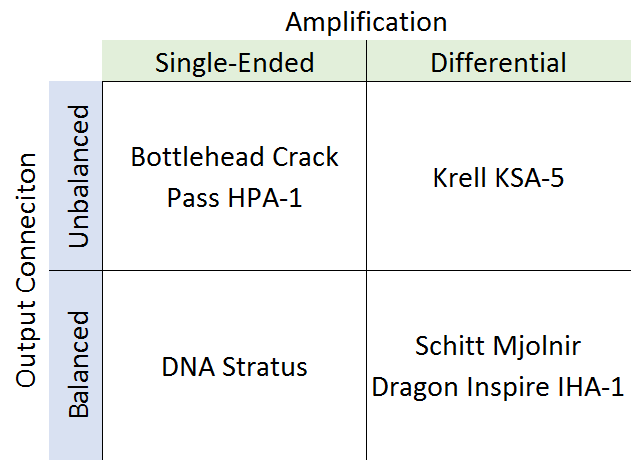
Line-Level Connections
Unbalanced and balanced connections are possible between devices (for example: source or DAC to amplifier, including inputs and outputs) and also between a source or amplifier to headphones (output only). These connections aren’t, in fact, the same.
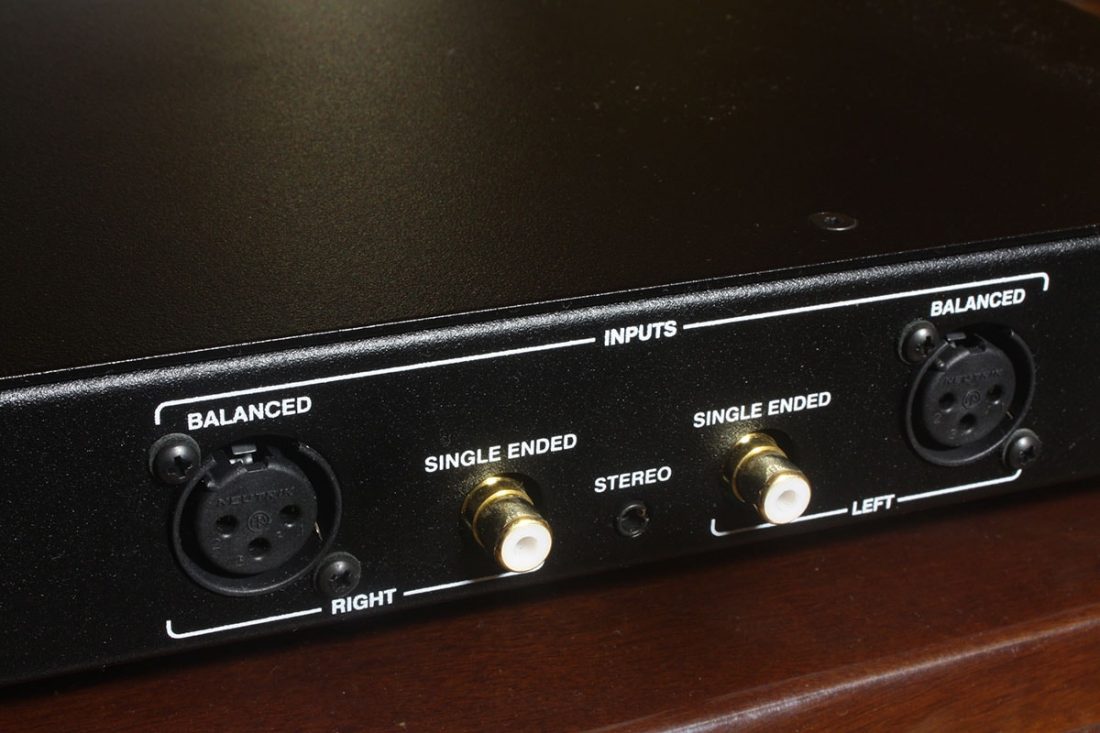
Unbalanced line-level connections are usually implemented with RCA jacks for audio, while balanced line-level connections typically utilize dual 3-pin XLR jacks for both the input and output. In both cases, one jack is normally used for each audio channel (left and right).
Whether you encounter these connections depends on the complexity of your personal setup and whether the source, DAC, and amp all are contained within one integrated device or are connected via external cables. Certainly, balanced line-level connections normally only appear on higher end gear.
The industry would like to equate balanced connections with expensive, high-end, and ultimate fidelity, however, this isn’t necessarily the case. In this article we will discuss the technology behind balanced and unbalanced connections and if it makes an appreciable improvement, or even a difference, in sound quality.
Balanced Amplifiers or Sources
As explained earlier, the term “balanced amplifier” is something of a misnomer. Balanced and unbalanced are types of interconnections between devices; these terms do not refer to specific amplifier architectures. Usually when you see the phrase “balanced amplifier” it is referring to a differential amplifier without shared grounds and balanced outputs.
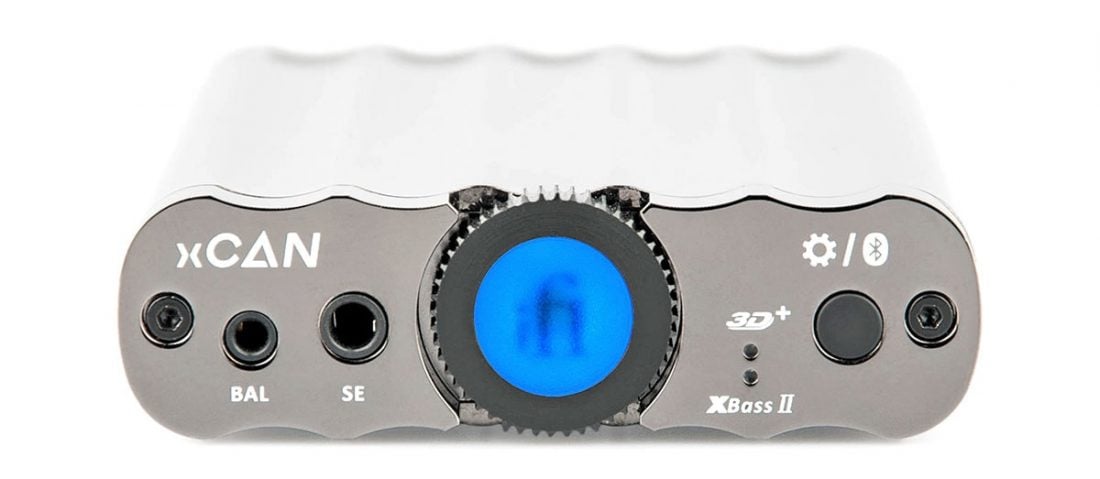
A truly balanced and differential signal path from source to load requires double the circuitry and is thus more expensive to manufacture, but it can yield an audible improvement. This is sometimes referred to as ‘dual-mono’ to indicate that each channel is completely isolated from the other.
Unbalanced Connections
In the simplest terms, transferring an audio signal to a single headphone driver requires a pair of wires to create a loop. This loop connects the audio source and the load (headphone driver). For a pair of headphones, there are two wires connected to each channel: left ‘L’ and right ‘R’. Each pair of wires provides a voltage reference; it is the difference between these references that drives our headphones. It works the same way for line-level connections between components.
Unbalanced connections derive their name from the relative impedance to ground of the two connections in each channel: hot or positive ‘+’ and ground or negative ‘-’. Because the impedance to ground differs, we call the connection unbalanced.
In an unbalanced headphone setup, the ground connections for both sides are often tied together, so it is possible that the headphone cable may only consist of 3 wires: L, R and shared ground. However, most headphones of decent quality do have a separate wire from each negative terminal of the headphone driver through the length of the cable. These individual grounds are joined at the plug connector.
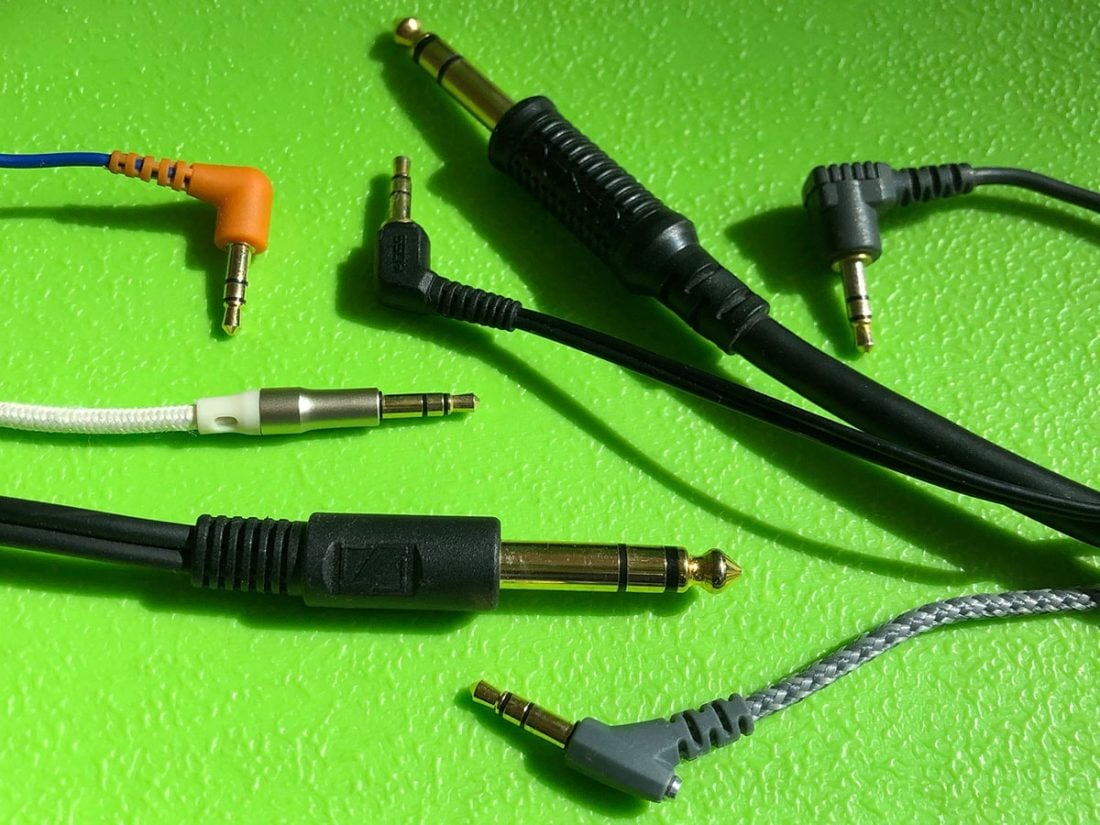
The most common type of headphone connector is unbalanced and has three contacts for the L+, R+ and shared -. This is known as a TRS (Tip, Ring, Sleeve) connector.
Drawbacks of Unbalanced Connections
A possible negative side effect of an unbalanced connection (line level or headphone) is the potential for unwanted noise, interference or hum to be introduced to the signal. Because the ground is linked, wayward currents from power supply transformer leakages or stray capacitance can become part of the audio signal.
These currents can introduce undesirable audible hum or other interference in unbalanced connections. In addition, the shared ground between unbalanced channels is blamed for crosstalk. Crosstalk is essentially unwanted signal leakage (or coupling) between audio channels. While crosstalk is one of the basic audio measurements, be aware that it seldom causes audible issues in modern equipment.
These drawbacks led professional audio gear to require a different connection method to avoid unwanted noise or audio degradation. Thus, balanced connections were born.
Balanced Connections
A balanced connection has two signal phases per channel. Each phase has an equal impedance relative to ground, hence the name balanced. The advantage of balanced connections over unbalanced connections is common-mode noise rejection.
It is called ‘common mode’ noise because the direction of the noise currents appearing simultaneously on the positive and negative sides is the same; a noise voltage differential does not appear across the two sides. Common-mode noise can generate Radio Frequency Interference (RFI) in cables.
Because any interference is imprinted equally on the two phases’ equal impedance, that common-mode interference cancels out. This can be especially useful in professional setups that require very long transmission cables (such as microphones) with low noise.
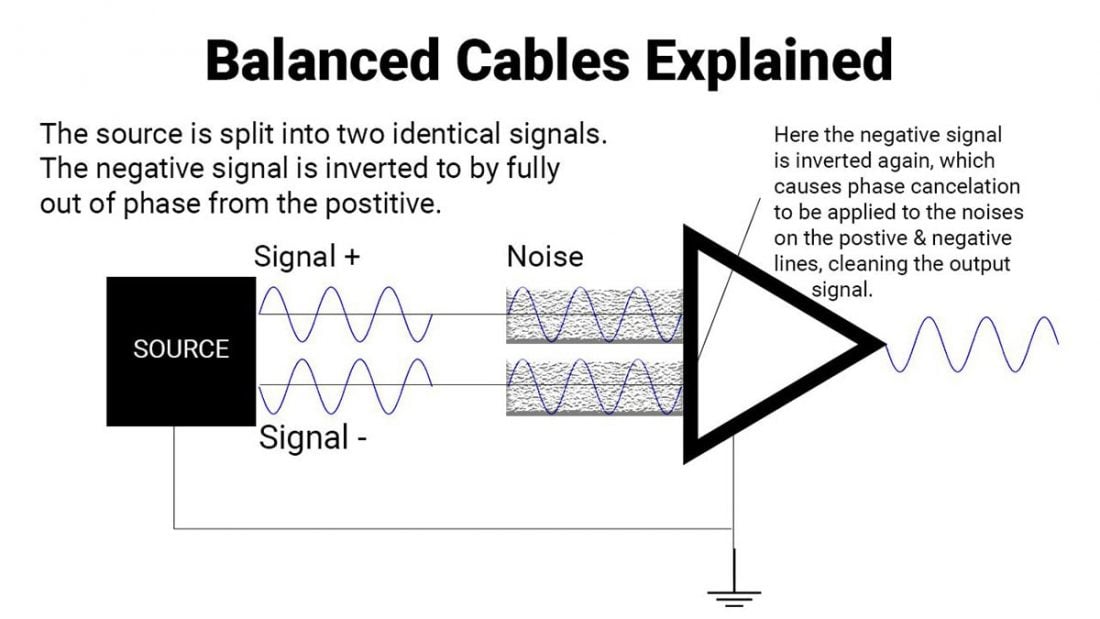
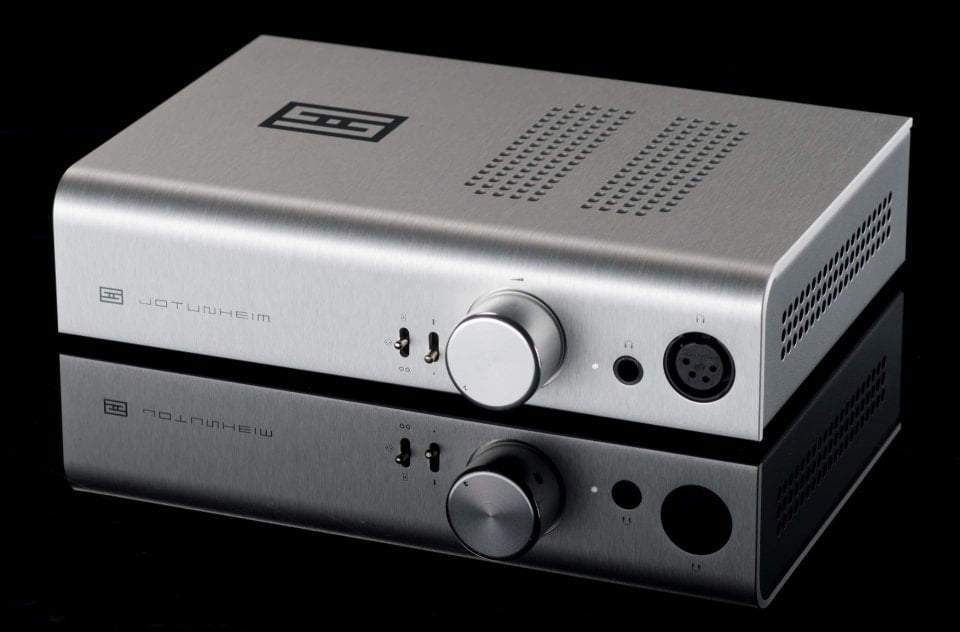
A Mathematical Look at Signal and Noise
In mathematical terms, we can take a look at how noise is removed from a balanced connection.
Signal: S
Noise: N
Conductors: C1 and C2
| Unbalanced | Balanced |
|---|---|
| C1 = S and C2 = 0 | C1 = S/2 and C2 = -S/2 |
- For an unbalanced connection, each signal travels along one conductor.
- For a balanced connection, each conductor contains half the signal out of phase.
When noise is added to each conductor, the equations above become:
| Unbalanced | Balanced |
|---|---|
| C1 = S + N and C2 = 0 | C1 = S/2 + N and C2 = -S/2 + N C1 - C2 = (S/2 + N) - (-S/2 + N) = 2S/2 + N - N = S |
- For an unbalanced connection, noise is added disproportionately to the high impedance signal conductor, resulting in a net noise contribution on the output.
- For a balanced connection, noise is added to both phases equally and is canceled out, leaving only the signal.
Drawbacks of Balanced Connections
At first glance, balanced connections appear to have many advantages over unbalanced, so clearly balanced must be the audiophile’s choice! Unfortunately, nothing is quite as easy as it seems. Although in certain applications a balanced connection is, in fact, superior, it doesn’t come without drawbacks.
While balanced connections reduce hum and interference, the usual differential approaches to driving balanced outputs can also impact audio quality because the source output impedance is effectively doubled. The random output noise will also double because there are two amplifiers rather than one.
Balanced differential connections and circuitry are by their very nature more complicated than unbalanced single-ended. This can further introduce audible imperfections. Although the on-paper effects of the additional circuitry are usually considered inaudible, it is possible that the sound may be degraded due to how the circuitry is implemented.
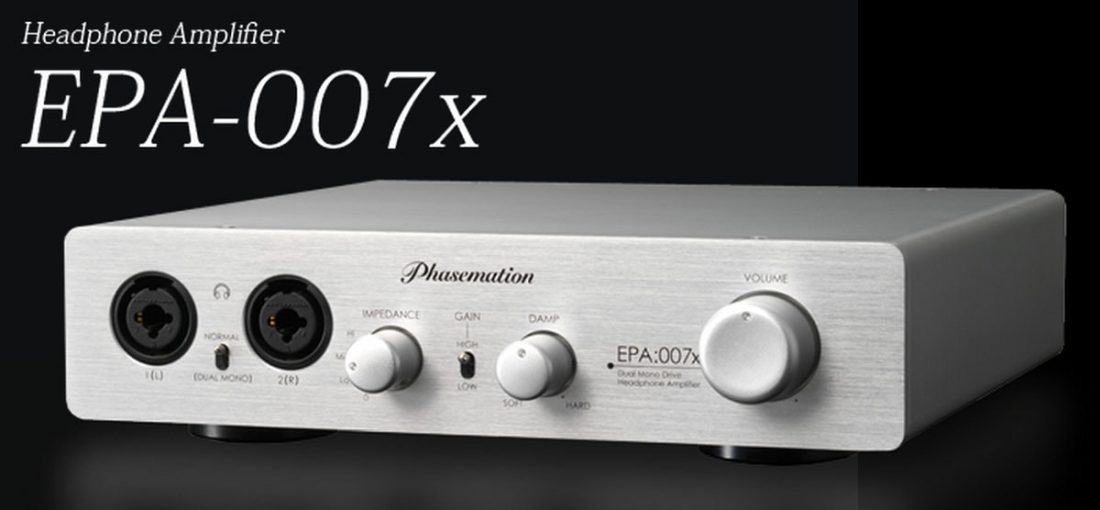
The quality of the balanced circuitry implementation is paramount, else the theoretical benefits may not outweigh the potential issues of interference or noise with an unbalanced connection.
Balanced Connections Are More Powerful and Faster
A couple of things come up often when discussing the benefits of balanced connections. Balanced provides more power and a faster response. While true, does this offer any real-world advantages?
While a vast improvement in power seems like an advantage, it is important to consider that more power doesn’t equate to improved audio quality. If the headphone can be driven easily by the amplifier, an abundance of power doesn’t necessarily offer any sonic benefits.
Balanced proponents such as Headphone.com declare that “balanced-drive delivers a noted increase in audio performance due to the doubling of the amp’s voltage slew rate…”. Slew rate speaks to the speed of an amplifier. It is defined as the maximum rate at which an amplifier can respond to an abrupt change of input level.
Again, it is important to consider that ‘powerful enough’ and ‘fast enough’ are real concepts. It is quite possible to design components far beyond audible levels. If something isn’t audible, further enhancing it yields no improvement. NwAvGuy goes further to say,
Headphone Cables and Connectors
Headphone cables come with a variety of connectors, and it can be difficult for the uninitiated to differentiate between balanced and unbalanced. For the purpose of this discussion, we are focussing on the end of the cable that plugs into the source, not into the headphones (as the headphone cup connector does not determine unbalanced or balanced; all headphone drivers are inherently balanced).
Types of Unbalanced Headphone Connectors
If the headphone cable comes with a standard 3-pole TRS stereo connector, it must be unbalanced, regardless if it is a larger 6.35 (¼”) or smaller 3.5mm (⅛”) connector. A 3-pole connection means the grounds are tied together and will not work with a typical balanced output.

It is not possible to convert an unbalanced headphone cable to a balanced connection with an adapter as there is no way to untie these grounds. However, replacing the plug with a balanced connector is an option.
- Pentaconn L- (first ring from the tip) and R- (third ring from the tip) must not be connected.
- Pentaconn ground (sleeve) to SE TRS ground (sleeve).
- Pentaconn L+ (tip) to SE TRS L+ (tip).
- Pentaconn R+ (second ring from the tip) to SE TRS R+ (ring).
Conversely, a balanced headphone cable can easily be converted for use with an unbalanced output. This simply requires a compatible adapter that ties the two negative lines together and has a connector plug to fit the source.

Types of Balanced Headphone Connectors
Traditionally 4-pin XLR connectors have been used for the connection between balanced headphone cables and a headphone amplifier. While appropriate in professional audio situations where the larger size and tough construction are prized, XLRs make heavy and clumsy home headphone connectors. For portable devices, they are frankly ridiculous.
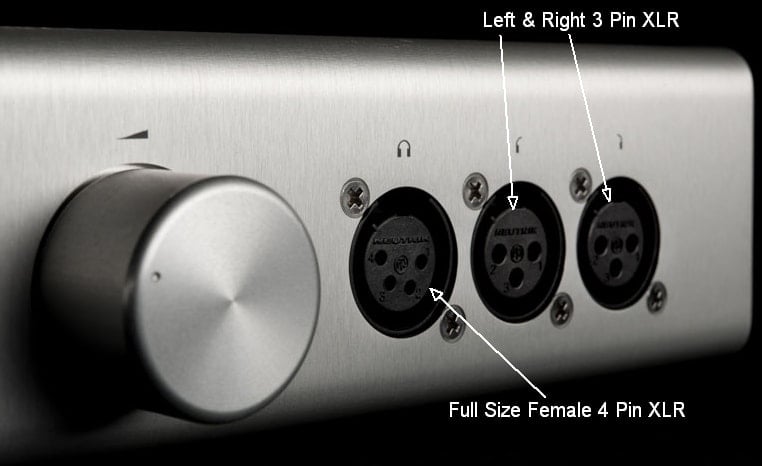
Some manufacturers adopt the ‘more is better’ approach and actually use dual 3-pin XLR connections between a balanced headphone and the amplifier. One for each Left and Right channel (the same as is done with line-level balanced interconnects).
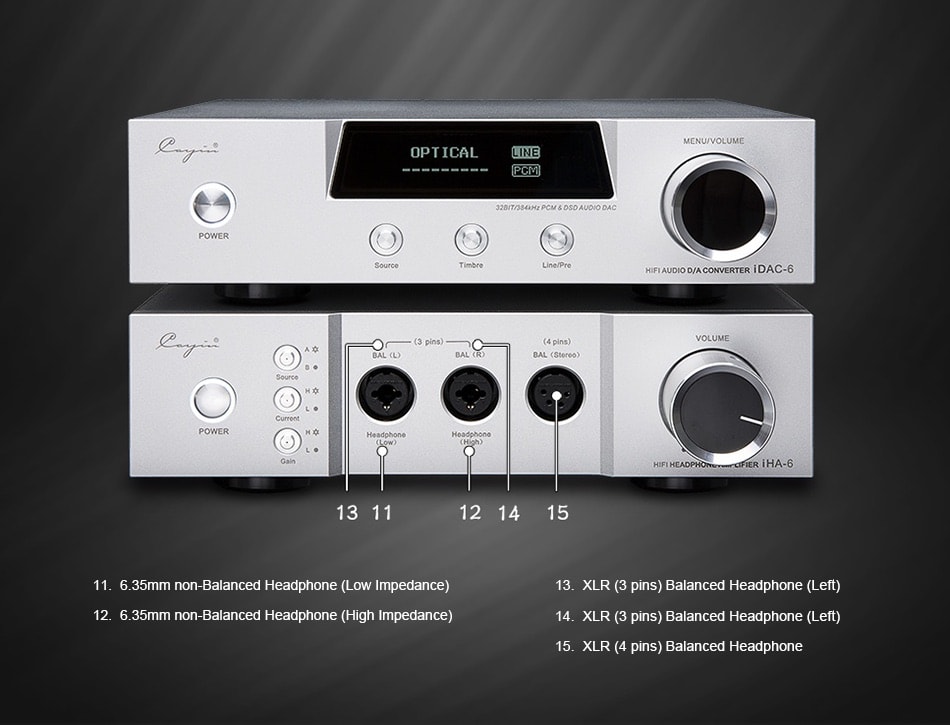
2.5mm TRRS connections are fast becoming the norm for portable balanced headphone use. The smaller size not only is ideal for tiny devices, it also prohibits accidental insertion of a single-ended 3.5mm plug, and provides the 4 discrete poles necessary for balanced operation.
While not a headphone cable, it should be noted that a potential hum issue can be introduced when connecting a portable source to a non-portable device with a true earth ground. For example, a battery-operated DAC or DAP connected to a home headphone amplifier. While not an issue with unbalanced connections, using a 4-pole balanced connection (such as the 2.5mm TRRS) can produce unwanted noise due to differences between ground references.
As you may have guessed, lack of standardization is certainly a factor with balanced connectors, leading to a plethora of adapters and plenty of confusion. There are seven different types of balanced connections for headphones and an additional one specifically for electrostatic headphones:
- 4-pin XLR (common non-portable headphone amplifier standard)
- Dual 3-pin (standard) XLR
- Mini 4-pin XLR
- TRRS 3.5mm (used on balanced cup connection on Oppo PM-3, Hifiman HM-901 and Geek Out v2)
- TRRS 2.5mm (used by Astell and Kern, Onkyo, HiFiMan and Little Bear)
- Kobicon miniature 4-pin Auto-IRIS (relatively rare but found on Ray Samuels RSA and Centrance balanced headphone amps)
- 5-pole 4.4mm Pentaconn (used by Sony)
- 5-pole connector for electrostatic headphones
Balanced Connection examples from DIY Audio Blog:
Conclusion
As we have seen, there is no simple, clear-cut answer for whether unbalanced or balanced is a superior connection over the other. Whether a balanced connection provides an advantage depends on the circuits within a device and what provides the best signal path with the least degradation. In this way, the source, rather than the headphones, is the critical component.
In truth, a well designed single-ended amplifier featuring unbalanced connections is capable of truly excellent audio performance. Certainly, it can be superior to a poorly implemented balanced design. The inverse is also true.
Usually, the only thing that differentiates the headphones themselves as unbalanced or balanced is the connector plug on the cable. Since many headphones have socketed user-replaceable cables, there are a ton of available options out there.
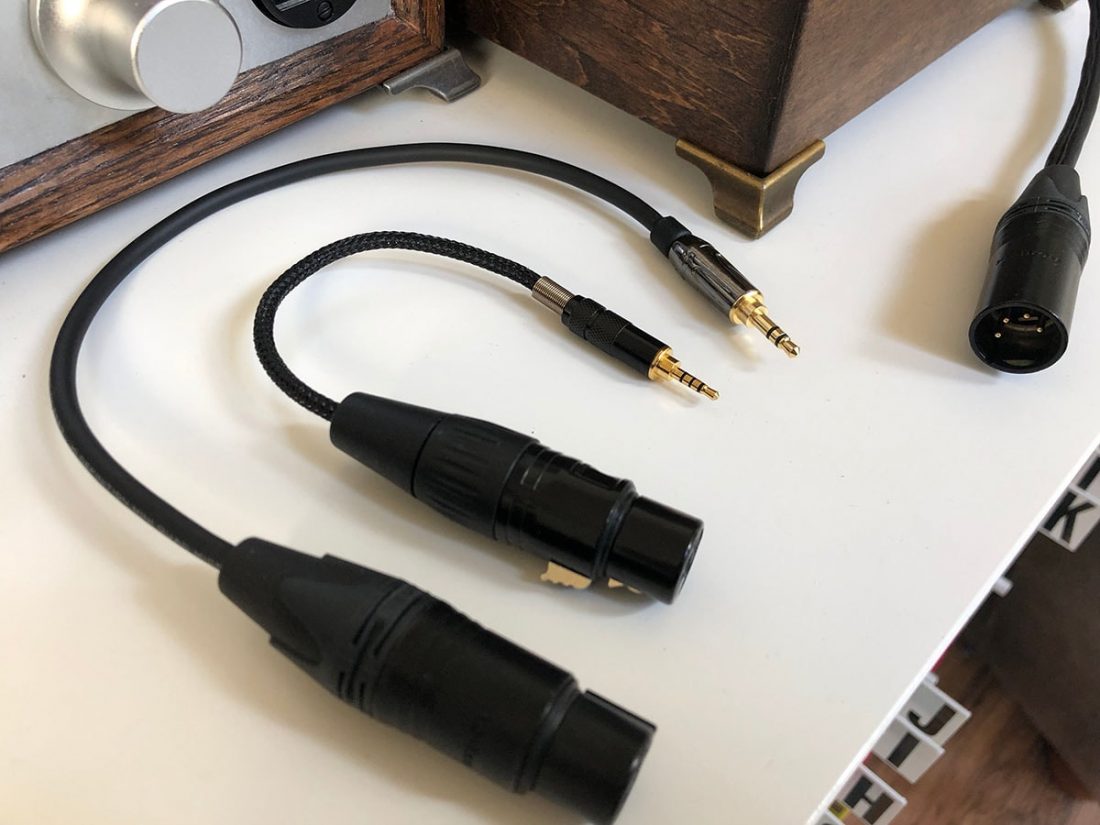
Balanced has clear advantages in professional audio applications and noisy environments, but for us headphone enthusiasts, it really is going to come down to the individual component (or components) in the audio chain. There are equally as many cases where properly implemented simple unbalanced solutions (rather than balanced) will be the clear winner.
It’s far too easy to get swept up in a case of ‘upgradeitis’, where chasing every tweak and hyped potential improvement is the norm. Just because you read a manufacturer’s claim or heard from an online audiophile guru that balanced is ‘always superior’, doesn’t make it a fact in all (or perhaps even most) cases.
If your source has the option of both unbalanced and balanced outputs, nothing beats trying them both yourself. Listen. Go with what sounds better to you. That’s the ‘right’ answer to which connection is superior.
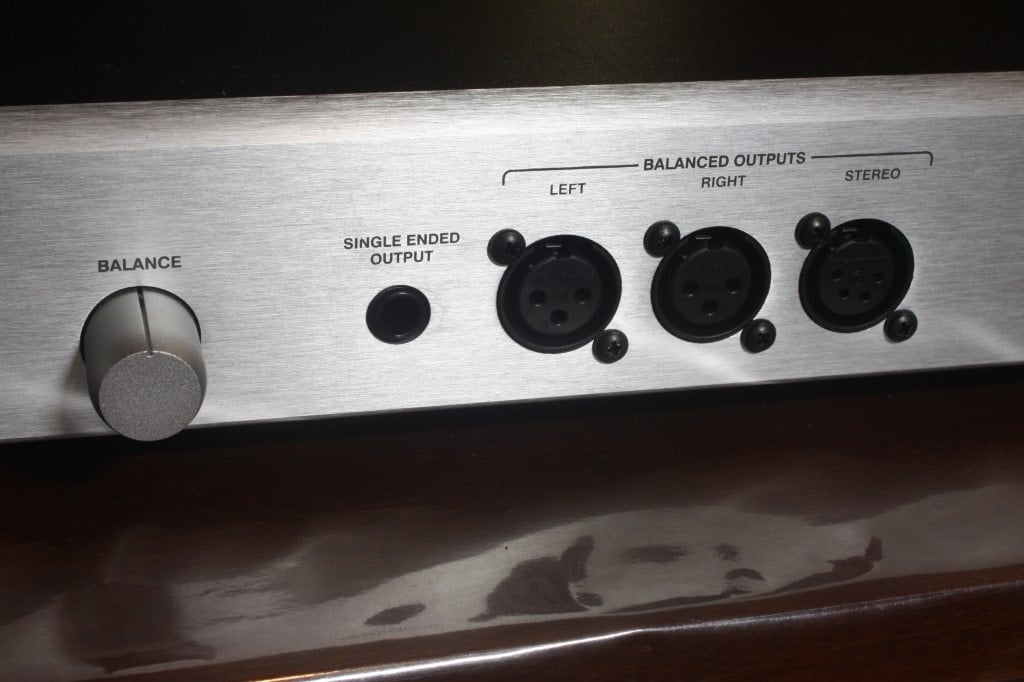

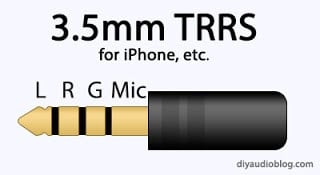
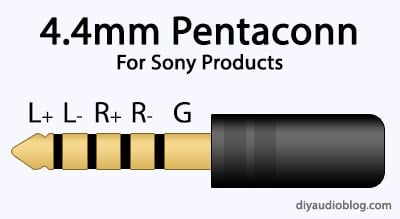

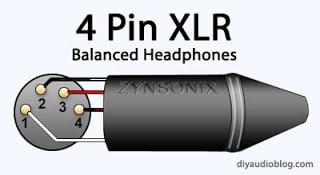
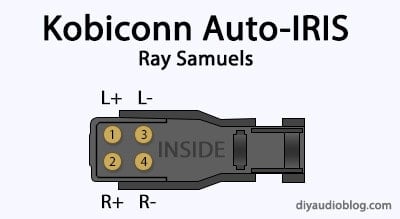
Hello and thanks for the article. I am going down the balanced path now and having some issues. My DAP features a balanced out port (Sony NW-ZX300). It is louder, and to me, fuller and cleaner. I recently bought a Loxjie balanced amp and bought a 4.4mm to dual 3p XLR cable. The hum is overbearing and makes the cable unusable.
I have been told that a 4 pole connector cannot match up to the 6 connectors in the dual XLR’S. Is that logical? Or true?
Shane D
Uh oh. Sounds like this is the case:
While not a headphone cable, it should be noted that a potential hum issue can be introduced when connecting a portable source to a non-portable device with a true earth ground. For example, a battery-operated DAC or DAP connected to a home headphone amplifier. While not an issue with unbalanced connections, using a 4-pole balanced connection (such as the 2.5mm TRRS) can produce unwanted noise due to differences between ground references.
“There is a new connection that we are hoping gets adopted by more manufacturers. It is called the 4.4mm TRRS. This plug has 5 contacts for a balanced connection and the 5th contact eliminates the grounding issue. Sony is pushing this connection and some companies are starting to adopt it like Sennheiser. We have adopted it on our audio cables and will be implementing it on future Headphone Amp designs.” – Moon Audio
Moon seems to indicate that the 4.4 TRRS should be able to ground properly from the source – not sure about that amp. Perhaps contacting the manufacturers to see if they have any recommendations.
Thank you for this article. I was getting all muddled up with all this.
Glad it was a help to you!
Great article, thanks!
The 4.4 mm Pentaconn is same as 4.4 mm TRRS correct?
Yes.
https://www.moon-audio.com/4-4mm-pentaconn-balanced-connector-for-sony.html
great article , i want to ask a question about dual xlr 3pin , from the picture above the pin no 1 are not connected to any wire , does it still count as balanced?? as i know the pin no 1 is for ground , if i build dual xlr 3 pin to balanced 4.4mm and using scheme like the picture above which pin no1(ground) are not connected to any wire is it will be balanced? or it becomes single ended??
Hi Trav,
Fantastic article. Does this mean that I could potentially damage the amp when connecting a balanced 2.5 cable with a 2.5 to 3.5 balanced adaptor to an unbalanced 3.5 source?
You should be ok with a balanced headphone cable connected to an unbalanced source. The reverse (unbalanced headphone cable to balanced source) is when potential to damage the source occurs.
Assuming you mean you are using a 2.5 balanced to 3.5 unbalanced adapter.
So the usage of 2.5 or 4.4 to 3.5mm adapters is discouraged over the fact that it would have a negative effect on your experience rather than an improvement? I got the ifi zen Dac recently which supports 4.4 balanced and 6.3 unbalanced output, i love it so far, but haven’t been able to try it and was wondering what the actual effect might be for my Hifiman Sundara
So I can convert my cell phone 3.5 se output with 3.5se to 2.5 balanced cable plugged into my balanced input of my ifi xcan then my 2.5 balanced headphones plugged into my 2.5 balanced output from my xcan
You are good trying your balanced cable headphones in both balanced and unbalanced (via adapter) outputs on your amp. A difference, better or worse, is up to you to decide. It depends on the specific gear and ears involved.
I’m looking to use a FiiO BTR5 Streamer/DAC as a source for my home stereo. It has a headphone amp in it. Will this cause a problem? I’ve been told no, but I want to make sure not to damage equipment. It has 2.5 balanced and 3.5 unbalanced jacks. Which should I use? 2.5 balanced to RCA or 3.5 to RCA; going from the BTR5 to the Preamp/Processor?
I have a FiiO BTR5 Amplifier, which has a 2.5 balanced output, and an Audio-Technica m50xBT headphone with a 3.5 cable. If I use an adapter (2.5 male to 3.5 female) to connect my headphone to the balanced source, will it make any improvement in sound quality (compared to just using normal 3.5 unbalanced source)?
Hi Mon,
Do not try what you suggest! The 3.5mm plug on your headphones indicates it is not a balanced connection but single ended. (The reason it has 4 connections is 1 is for the inline microphone). Trying to connect to the balanced output from the BTR5 could easily damage the unit. The reason the balanced output is a smaller size (2.5mm) is to avoid exactly that happening. You would need different headphones – ones designed for a balanced connection – to be able to connect it to the BTR5 2.5mm balanced output. Hope that clears it up!
Tim.
dont do that, you will destroye your btr5,
As other commenters have said:
Balanced headphone cable to unbalanced output (with adapter). OK!
Unbalanced headphone cable to balanced output. NEVER!
Yes, but only if you have hearing that rivals a dog and even then, you’ll be disappointed with what you were able to achieve vs. the money that you had to spend for the result. Now if your outputting to a recording device, I would say it’s definitely worth it, but as far as headphones go…..Dr Dre doesn’t even have headphones in his house that are worth using balanced. on. As far as sending the audio from your phone to amp, I recommend BT, but optical or HDMI from source(ex. computer) would be preferable. However, a digital connection is by far, in my opinion, the best connection you could ask for
So, in general is it true that headphones connected to a balanced output with the proper balanced connector will be louder at a given volume level than those same headphones connected to the same amp via an unbalanced connector? For example, I am looking at the Monoprice Monolith Platinum amp that has both balanced and (I assume) unbalanced (labelled single end) outputs. The output power ratings on the amp are significantly higher for the balanced output, so thus louder(?). I am trying to drive Sennheiser HD650s (300 ohm). Current running Bottlehead Crack, which sounds amazing, but just doesn’t seem to have the oomph I am looking for. I crank it all the way up and it really is just barely loud enough for my tastes with most sources. Looking for a more powerful option and wondering if a decent amp with balanced connectors is my answer.
A lot of balanced outputs will be louder, but not all.
The Liquid Platinum is Amazing. I just got one about a week ago. Best amp I ever got and power to spare.
I recently had an HD600 and it didn’t sound like much of anything on six different amps. But then I ended up buying a tube amp and I finally understood all the fuss about the Senn headphones. I still ended up selling them, but I get it now.
That’s cool that you like the Liquid Platinum. Really thinking about getting one. Anything you don’t like about it? You use the balanced output? What headphones are your primary ones that you use with it?
I am still running all my headphones through it. It is Amazing with my HiFiman Sundara’s and Focal Elex’s. Pretty good with my Fostex TH-610’s, but I am waiting on a balanced cable.
I still have to try my Grado’s but I already bought them a tube amp.
Next up are my Meze 99 Classic’s.
I think this amp can drive Anything!
Are you using the balanced or SE output? (I assume balanced as you said you are waiting for a cable for your Fostex phones). So a question: Would I still get the benefit of using the balanced output to the headphones, but feeding the source material from the DAC to the RCA inputs?
Hi. I can say definitively that something is wrong with your Crack setup. I own 650s and a Crack and it is LOUD (very) at even mid level on the volume control – absolutely unlistenable above that. Since you say you’ve tried a variety of DAC sources, the issue must be in the Crack (either internally or with the tubes). I’d investigate that before going any further. IMO there is no better amp for the 650s. They absolutely shine and are at their best powered by a Crack.
Trav you could be right. I bought the Crack already assembled and it has the Speedball, after market tubes and caps and may not work as intended (although as I said I think it sounds absolutely fantastic, just not loud enough). BUT, I think it is fine. It is capable of playing very loudly, as I downloaded one of those sound enhancers (EQ, bass boost, volume boost) apps and using that I can increase the volume until it is WAY too high, however the distortion introduced by those apps make it unlistenable. But it tells me the amp and the headphones are capable of much higher volumes, I just want it cleaner.
Your problem can be solved, with BT. Mine was. Otherwise, I think your only real option is a separate pre-amp……or better speakers, one of the two. Just saying….. Your balanced cable is nothing more than a tweaked analog cable and analog is not efficient when it comes down to sending distinct signals at a fast pace……unless you have a wire for damn near every frequency. Now with digital your looking at using half(if not a third) for what I think you’re hoping to achieve
This is for Dave, although I don’t see his comment here (I got an email about it).
The Liquid Platinum will be the same whether the DAC feeding it is XLR or SE. The important thing is using the XLR out for your ‘phones.
Another conversion question. I have a FiiO M11 Pro with a 4.4 Balanced input, I normally use the 3.5 with my aux cord and headphones. Is it okay to use an adapter with a 4.4 male end (to plug into the balanced portion) and a 3.5 female end to plug in my aux/headphones? Or is this a huge no-no?
Without looking up if the FiiO is doing any sort of special trickery to make this possible, the short answer is NO. You can not plug an unbalanced headphone jack into a balanced output using an adapter. This shorts the output and may damage the amp.
Hi, will plugging in a 3.5 trrs balanced input into a normal 3.5 TRS jack such as one normally on laptop damage will damage the headphone by any means? I tried out and only the right cup has sounds when plugged all the way in. Then I try to switch the tip, ring, ring, and sleeve connection by slowly pulling it out. I notice that it had a few static sound noise. I then test the headphone out, and I can’t notice any diver damage. However, am still new to this headphone so am not really used to the sound yet, so I can’t really tell. Thank you.
It should not. Typical concern is in potential amp damage by shorting rather than headphone damage. Either way, TRRS headphones with mics are commonly inserted into standard headphone sockets.
Thanks. In this case I rather damage the amp than the headphone. I was unsure because this kind of 3.5 balanced input is kind of rare, instead of mic its either R- or L-. https://cdn.head-fi.org/a/10053634.png (One of these).
Hi, I have a S.M.S.L M500 and would like help determining how to use balanced cables to run into my Beyerdynamic Amiron Home headphones.
The balanced output on the unit is a dual left and right standard 3pin XLR and my headphones have a unoluggable 3.5mm input. Beyerdynamic confirmed they can be recabled for balanced outs.
My question is do I just buy two separate female 3pin xlr to 3.5mm interconnects? Do they have to be labeled balanced if I am just buying two separate ones?
Most of those seem to be microphone cables etc., and I can’t find something that looks like people are using for a similar application. Any suggestions would be greatly appreciated as I don’t want to damage my equipment.
Any 3-pin XLR jacks should do (you are right – they are most often labeled ‘microphone’ as that is the typical usage). ‘Balanced’ is just the final wiring setup, rather than a label for the jacks.
Alan’s guide on NLovell cables may be of some use in determining proper polarity. https://www.nlovellaudio.co.uk/connectors
Would this work for converting 2.5mm balanced output on DAC/AMP to unbalanced input on speakers’ amp: https://www.amazon.co.uk/dp/B08L33999M (I don’t understand why the 3.5mm end is TRS instead of TS) which is then connected to unbalanced RCA amp input using, for each of the two 3.5mm TRS connectors, a TS to RCA mono adaptor.
I do not quite get what all this difference between line level and headphone out level is: my headphone out as well as 3.5mm unbalanced out on computer’s onboard audio, when connected to inputs on my amp driving in-ceiling speakers, drives them just fine – I get it that sometimes I may have to up the volume on the amp more for connection of some devices (headphone out on headphone DAC/amp like FiiO BTR5) than others (computer’s 3.5mm out), but other than that are there any drawbacks (THD greater at higher output ‘volume’ set at amp)?
Hi Trav,
I’m a real big noob here diving into the rabbit hole…
Just got myself a lcd-x and matrix mini i 3.
Using a single ended ‘unbalanced’ cable. Looking to purchase a cable from periapt Dual 4 pin XLR mini to 4 pin XLR :
https://periaptcables.com/collections/frontpage/products/6-type-6-dual-4-pin-xlr-mini?variant=13627723972713
+ 4 pin XLR to 4.4mm pentaconn adapter (as the matrix mini 3 does not have a female XLR port)
Do you believe this is a “sensible” purchase? Would this extra cost be “worth” it in your opinion?
Thanks in advance.
Hi,
I have the FiiO M11 and the AKG N90Q here.
Would it be better running an audio cable between the Fiio M11 DAP and the N90Q or would it be better to run a USB cable between both of them? I guess the latter one?
Thank you.
Cheers
Caesar
It all depends on what you think will have the better sounding DAC. Digital out to move the digital to analog conversion process to the second device. Analog out to decode internally and just use the headphones as an amplifier for the analog signal.
Hard to give a definitive answer. Just gotta try both and see what you like more.
My DAC amp has a 2.5mm balanced output and my 660s headphones have 4.4mm balanced cord. Can I use a 2.5mm adapter that allows me to plug my 4.4mm headphone jack into it safely, while still keeping the setup balanced? And without causing any damage? TY
thanks alot of information
Glad it helped! Cheers!
Presumably using a balanced to unbalanced cable adapter halves the power output since you effectively ditch half the signal. Seems worth mentioning.
Perhaps I’m not understanding what you mean. You shouldn’t use an adapter to change a balanced output to SE headphone cable.
Hi Trav.
I have a Hidisz AP80 Pro DAP. It has both 2.5mm balanced and 3.5mm unbalanced out jacks. Can I connect it to KRK Aux Go 3 speakers using a male 2.5mm cable to 3.5mm cable into aux input of the speakers?
The speakers also have RCA input.
Would using a 3.5mm cable into the AP 80 Pro to RCA on the speakers be better?
I would personally use the 3.5mm single ended output. This avoids any potential issues with the input not being discrete. Using the 3.5mm or RCA input shouldn’t matter.
Noted, Trav. Thanks
Re my earlier query. Sorry Hidisz should read Hidizs.